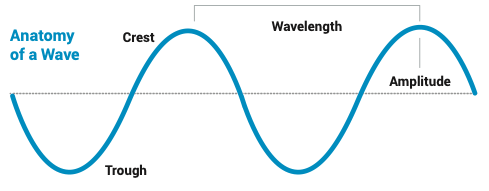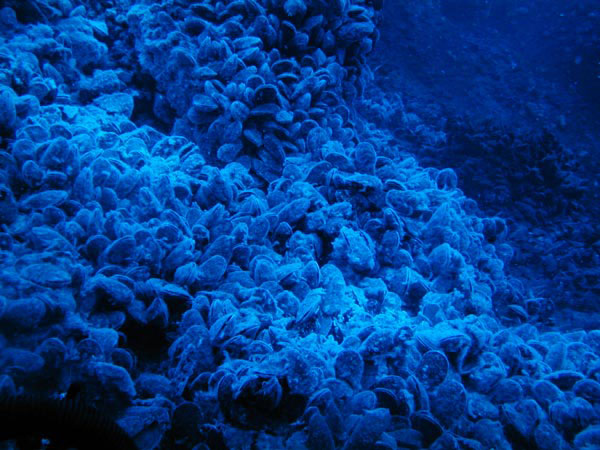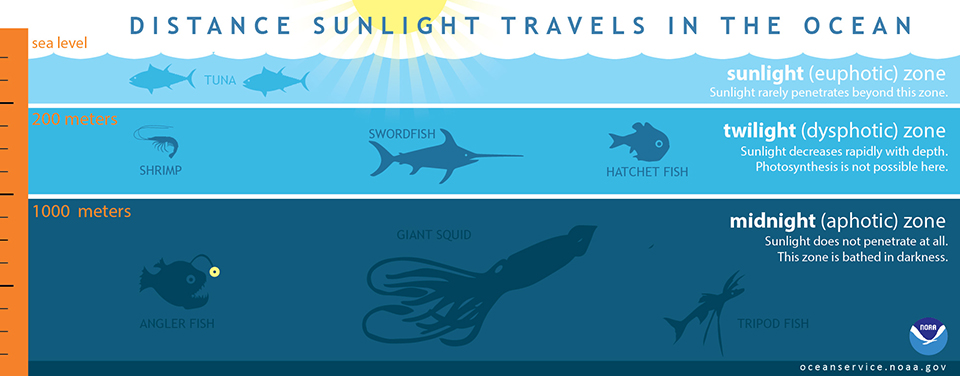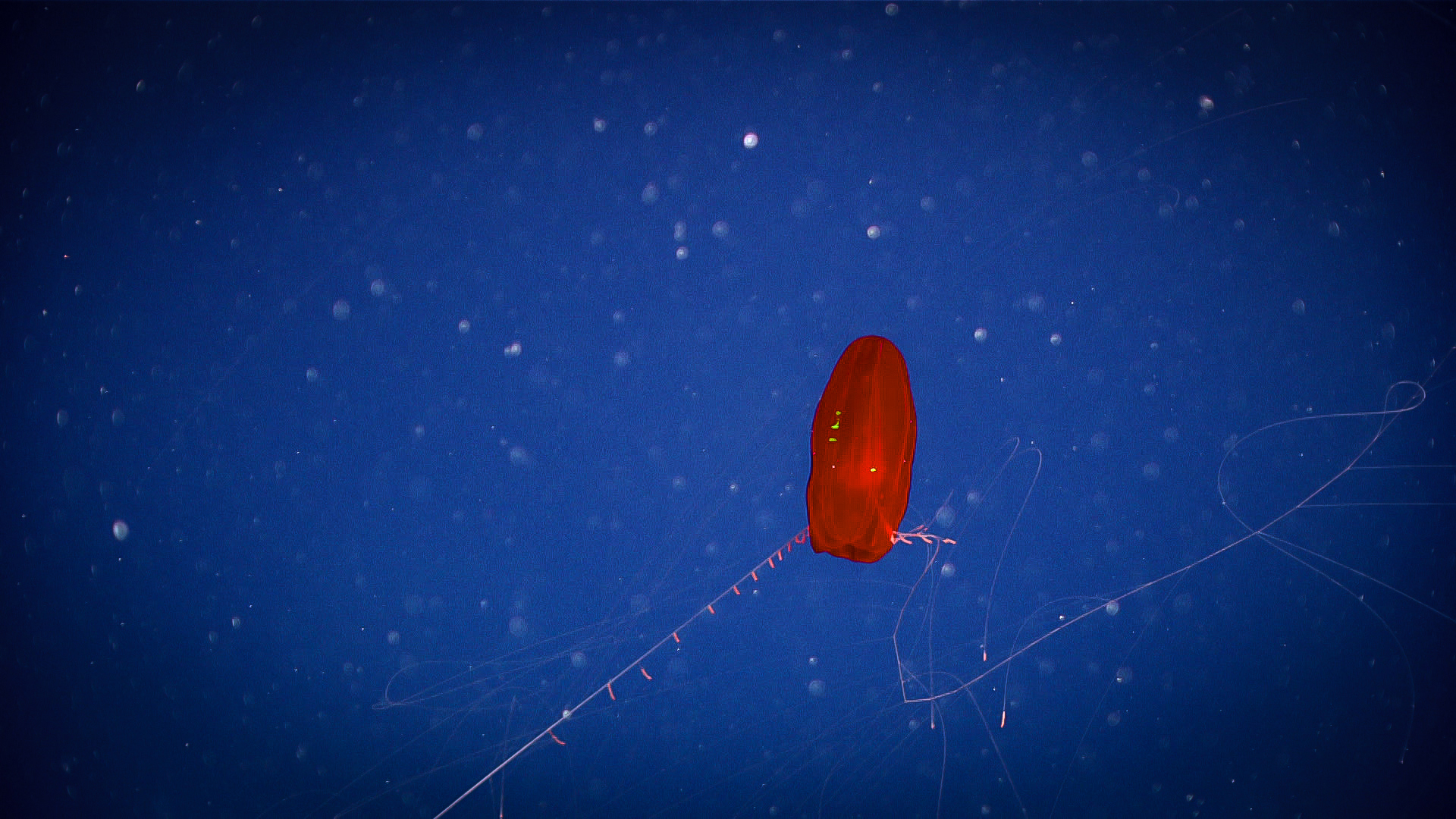Topic
Bioluminescence

Light and Color in the Deep Sea
What happens to light as it travels down through the depths of the ocean? How does it affect the colors we see?
What is Light
Light is energy traveling at the fastest speed in the universe through what are called light waves. Unlike ocean waves, light waves are electromagnetic energy. Like all electromagnetic energy, they have different wavelengths.
Parts of a wave:
- Crest – the highest point of a wave
- Trough – the lowest point of a wave
- Wavelength – the distance between two waves
- Amplitude – the height or depth of a wave; 1/2 the length of the vibration path
- Frequency – the number of waves that pass a fixed point in a period of time


Light Under Ocean Waves
Sunlight contains all of the colors of our visible spectrum— red, orange, yellow, green, blue, and violet (ROYGBV). When all of these colors are combined together, they appear white as white light. Each visible color has its own wavelength, or distance between two waves. Red light has the longest wavelength in the visible spectrum and violet has the shortest wavelength. Wavelength shortens as you move in sequence from red to violet light across the spectrum.
Wavelength is also related to energy. Colors with shorter wavelengths, like those on the blue and violet end of the spectrum, have more energy than colors with longer wavelengths. Red light has the lowest energy. In water, colors with lower energy, such as reds, oranges, and yellows are filtered out quickly. Because blue and violet light waves have more energy, they travel deeper through water.

Eyes in the Twilight Zone
Very little light from the surface penetrates between 200 and 1,000 meters, in what’s known as the dysphotic or twilight zone. Once we reach about 1,000 meters depth, light from above has disappeared entirely. This sunless realm is known as the aphotic zone.
Light conditions affect how much both humans and organisms see. Some deep- sea organisms’ eyes have evolved to improve their vision in low light. They can be 10 to 100 times more sensitive to light than human eyes. This is one of their amazing adaptations that helps them survive. Meanwhile, some other deep-sea animals have completely lost their ability to see. They rely on other senses, instead.

What Colors Are Found in the Deep?
The wavelength of light that reflects off an object is the color we see. For example, an object we see as red in white light appears that way because it reflects longer, less energetic red light waves. It absorbs the other colors (all of which are present in white light).
Red and orange light waves have less energy, so they are absorbed near the ocean surface. Blue light penetrates much farther, so blue objects are more visible in the deep.
What Color of Animals Do We Find There?
Red and black animals are common in the deep ocean. At this depth, few, if any, red light waves reflect back to one’s eye. Since there is no red light available, red animals here will appear gray or black, making them nearly invisible to other organisms. This helps them evade predators when there is nowhere to hide.

Additional Resources:
Why are so many deep-sea animals red in color?
How does depth affect the color of marine animals?
Deep Light